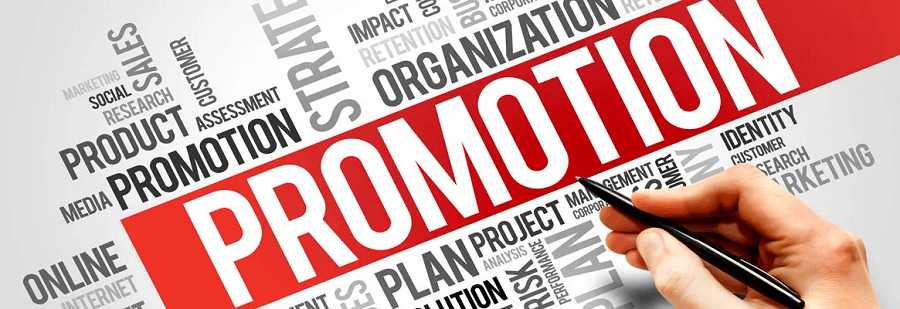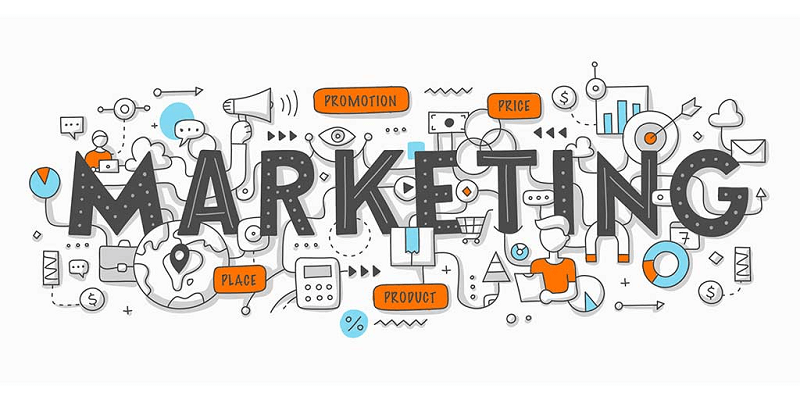Promotion DefinitionPromotion is a marketing strategy that businesses use to increase the awareness and sales of their products or services. It is an integral part of marketing, which includes the product, price, place, and promotion. Promotion is about communicating with customers and potential customers about what a business offers and convincing them to buy or try it out. This article will define promotion and explore the types of promotions businesses can use. Promotion is essential to any business, allowing businesses to reach a larger audience and attract new customers. It can also help businesses retain existing customers by reminding them of the benefits of their products or services. Promotions can target different market segments, such as age groups, gender, income, and location. 
Types of PromotionsBusinesses can use different types of promotions to achieve their marketing objectives. The following are some of the most common types of promotions: 1. Advertising Advertising is a paid form of promotion that aims to reach a large audience through various channels such as television, radio, print media, billboards, and online platforms. Advertising creates brand awareness, generates interest, and promotes sales. The success of an advertising campaign depends on factors such as the message's creativity, the ad's timing and placement, and the audience's response. 2. Sales Promotion Sales promotion refers to short-term incentives encouraging customers to buy a product or service. Examples of sales promotion tactics include coupons, discounts, free samples, contests, and loyalty programs. Sales promotions are often used to boost sales during slow periods, to clear excess inventory, or to introduce a new product. 3. Personal Selling Personal selling involves direct communication between a salesperson and a prospective customer. This type of promotion is commonly used in high-value sales of products such as real estate, automobiles, and financial services. Personal selling is highly effective as it allows the salesperson to tailor the sales pitch to the customer's needs and concerns. 4. Public Relations Public Relations (PR) refers to managing the relationship between an organization and its stakeholders, including customers, investors, employees, and the media. PR aims to create a positive image of the organization and build trust and credibility. PR activities include press releases, media events, sponsorships, and community outreach programs. 5. Direct Marketing Direct marketing involves direct communication with customers through various channels such as email, text messages, direct mail, and telemarketing. Direct marketing is highly targeted and allows marketers to personalize the message to each customer. The success of a direct marketing campaign depends on the quality of the customer database, the message's relevance, and the communication's timing. 6. Sponsorship Sponsorship involves providing financial support or resources to an event, organization, or individual in exchange for exposure and branding opportunities. Sponsorship is often used to reach a specific target audience or to align the brand with a particular cause or event. Examples of sponsorships include sports teams, music festivals, and charity events. 7. Word of Mouth Word of mouth is one of the most powerful forms of promotion as it involves recommendations and referrals from satisfied customers. Word of mouth can occur naturally or be encouraged through various tactics such as social media, online reviews, and customer testimonials. The success of word-of-mouth promotion depends on the quality of the product or service, the level of customer satisfaction, and the willingness of customers to share their experiences with others. 8. Point of Purchase Point of purchase (POP) promotion refers to promotional activities at the point of sale, such as in-store displays and packaging. POP promotion is designed to attract customers' attention and encourage impulse buying. The success of POP promotion depends on factors such as the display's location and visibility, the packaging's attractiveness, and the product's perceived value. 
Objective of Promotion1. To Raise Consumer Awareness of Products and Brands Several sales promotion strategies can be used as essential promotional tools in the early stages of the launch of new products and brands. These strategies are highly effective at introducing consumers to products and brands for the first time. All further upcoming advertising efforts will be built on this awareness. Promotional activities encourage consumers to try new brands and goods and dealers to promote them. 2. To Pique Interest Sales promotions work wonders at piquing consumers' interest in a certain product. Generating curiosity is frequently regarded as the most crucial application of sales marketing. A compelling sales campaign may greatly increase client attention in the retail sector. 3. To Inform Through promotional efforts, customers are given thorough knowledge about the goods. This greatly aids the conversion of attention into real sales. 4. To Increase Demand By persuading people to purchase the items, effective promotional activities can increase demand for the product. 5. To Strengthen the Brand Promotion may be used to boost the brand's recognition among consumers. Long-term recurring sales of the goods will be ensured by doing this. 6. To Draw in New Clients Sales promotion strategies are crucial in attracting new clients for a firm. New clients are typically brand loyalists from other companies. Samples, presents, awards, and other incentives entice customers to switch to a new brand or dealer. 7. To Encourage Current Consumers to Make Additional Purchases Promotional activities can boost the purchases made by current customers by getting them to consume more or more frequently. 8. To Aid the Company in Maintaining its Competitiveness Businesses engage in sales promotion operations to maintain their position in the market. Hence, no company can avoid sales promotion efforts in today's competitive world. 9. To Boost Sales During the off-Season Sales of the items naturally decline during the off-season. As a result, promotional efforts can be carried out throughout the off-season to maintain or even grow sales. Off-season discounts and off-season incentives can help with this. 10. To Replenish the Dealers' Stock Dealers, such as wholesalers and retailers, typically deal with a wide range of products. As the producer supplements their efforts with sales promotion tactics, their selling activity gets simpler. When a product or service is strongly backed by sales promotion, dealers must stock more of the same thing. 11. To Retain Current Clients A sales campaign might be tailored to retain existing customers, especially if new competition exists. 
Nature of Promotion
Importance of Promotion

Major Factors Affecting Promotion DecisionsA company must evaluate various aspects before deciding on its overseas market promotion plan. Factors Affecting Promotion Decisions are: 1. Corporate Objectives The firm's aims have a significant impact on the promotion decision. A firm's aims may differ in various foreign markets, or business strategies may differ in the same market. The firm's commitment to worldwide operations determines its promotion approach. The firm's goal in foreign marketing may be to build its image over time, or it may be to maximize its financial resources or profitability quickly and then exit the market. It has a distinct business identity. So, a company's marketing strategy should be based on its overall goals. Because of this, numerous businesses use a range of strategies in their global operations. 2. The Kind of Goods or Services Offered The nature of a company's products or services will also impact its advertising strategy. Standardization applies to some products as well as their marketing strategies. A worldwide standardized advertising strategy may be used in such circumstances. Soft drinks, like Coca-Cola, satisfy customers' basic needs for thirst in all countries. Consequently, a soft drink business may use common advertising themes across all platforms. Moreover, numerous more common commodities are used similarly but with small differences. The promotional themes and programmes can be used precisely as written or with simple alterations. In contrast, others, such as ready-made garments, are not standardized. These products stand out in diverse markets. The standardized advertising strategy cannot be used since these commodities do not meet the same requirements in all markets worldwide. For example, although apparel meets the demand for basic clothing in impoverished countries, it only meets the fashion requirement in France. The two markets cannot use the harmonized advertising method in this case. A garment manufacturer should develop a variety of advertising tactics and concepts. 3. Media Availability A medium widely available in one's nation may not be available in the overseas market. Since it is possible to generalize that similar media are accessible in most industrialized nations, it is important to remember that they may differ in terms of institution quality and communication value. The promotional message, theme, and other media characteristics may be modified. But, the duty of an international marketer is complicated when a specific sort of media is just unavailable. Television, for example, is not available for commercial communications in several undeveloped nations. India has lately launched a commercial TV network service. TV cannot be utilized as a promotional medium in such instances. Low literacy rates may prevent some nations from having enough publications for advertisements. Because of this, the marketer cannot use journals and may be forced to turn to other easily available media. When creating their marketing plan, marketers should obtain information about the media from international advertising companies, national diplomatic missions, and organizations of advertising agencies. 4. Financial Consideration Financial considerations are a crucial factor to consider when choosing a marketing programme for the company. A company with solid financial standing cannot carry out a costly strategy. However, a company with a solid financial base can choose any strategy that would benefit the company. For instance, because advertising is expensive, most businesses in poor nations like India do not rely on it as much. Companies favour participating in fairs and show over sending direct mail to international consumers. These companies occasionally use consortium ads in international markets. The Export Promotion Councils or Commodity Boards frequently publish these adverts. On the other hand, businesses with significant financial resources use sales promotion strategies like advertising to sell their goods globally. Thus, a company's financial resources place a cap on its advertising strategy and promotional methods 5. Environmental Constraints Last but not least, the company must consider environmental factors like the degree of economic development of a nation, the average person's disposable income, consumer preferences and attitudes towards advertising and sales presentations, rivals' promotion strategies, and the legal requirements in a specific foreign market.
Next TopicSales Promotion Definition
|
 For Videos Join Our Youtube Channel: Join Now
For Videos Join Our Youtube Channel: Join Now
Feedback
- Send your Feedback to [email protected]
Help Others, Please Share










